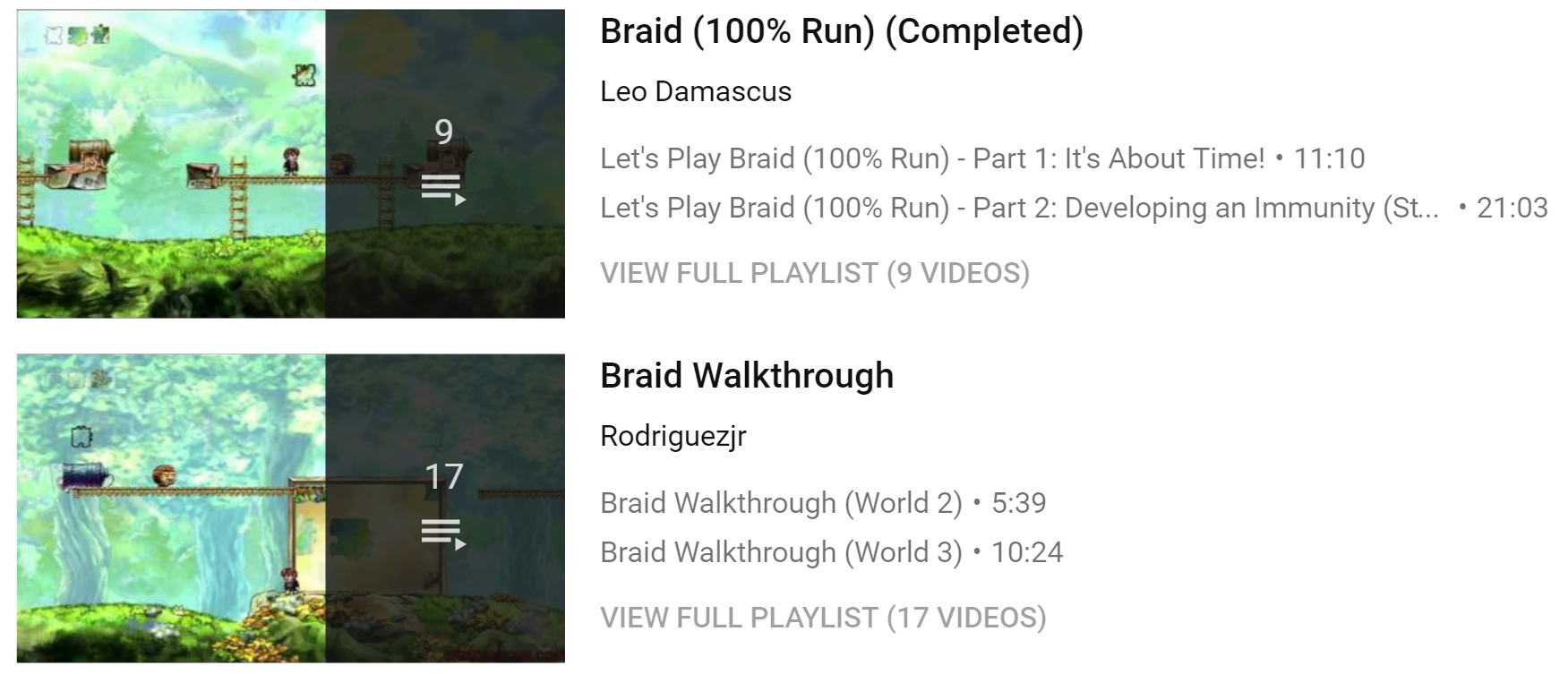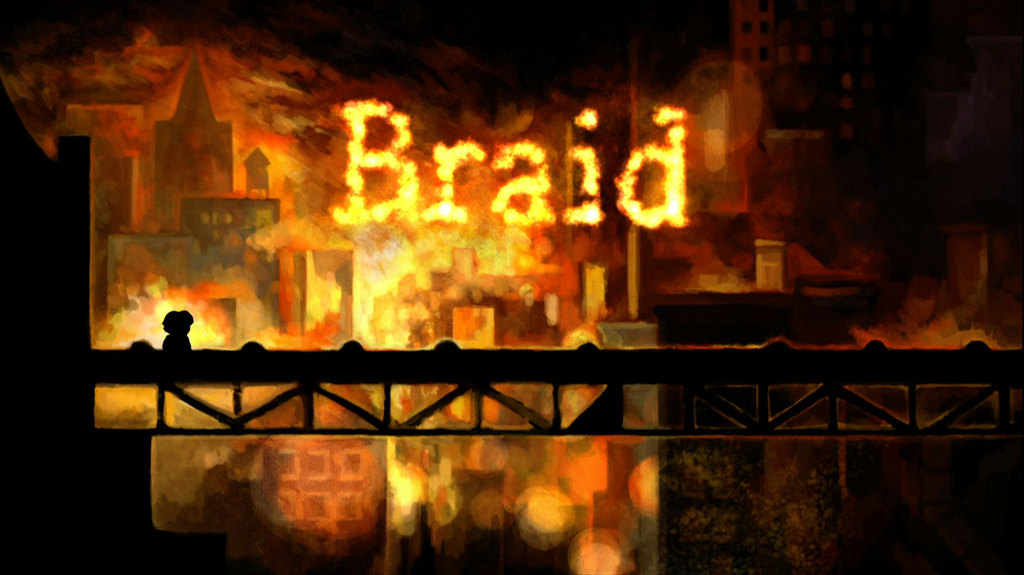Upon first considerations of where to go with this project, our group quickly hit a roadblock. With the wealth of digital works discussed in class available to us, we needed to come to a consensus regarding what to remediate. It did not take long for us to realize that when it came to the literature and films, our tastes varied, so much so that it did not seem fair to force any member into working on a story in which they had no interest. Struggling to find common ground in our first meeting and drifting off into different ideas, it was Nicholas who pulled us back together with a wild idea: remediating a pre existing game…in the form of a new game. Such an idea brought us back to our shared love of games, they very thing that beckoned us to enroll in this course.
Limiting our choices to the video games played during the semester eliminated the tyranny of choice we struggled with. With a little more discussion, we landed on a mutual fondness for the format of Gone Home but the story of Braid. All that was left was to combine the two in a crucial scene, one that was practically decided with the name of the former game, as we had, gone home to Tim’s central house.
Of course, there were plenty of worlds to explore based in fantasy and a general disdain for time and physics, so why choose something as seemingly basic as a house? Well, as can be seen through playing Gone Home, a house can hold an anthology of histories. It literally does so by holding the paintings in Braid that already begin to remediate Tim’s backstory. As a static hub through which our protagonist jumps from one world to the next though, we do not get enough time to appreciate the detail of Tim’s home. As such, we threw players in our game right into it.
Beyond honoring the hidden value in a home, we also honored the playstyle of Gone Home, and many walking simulators like it, by making our remediation three-dimensional. Doing so added depth to the story in multiple ways. In a literal sense, we made a two-dimensional story 3D, bringing the story into a dimension players should be more familiar with, considering it is the dimension we live in. Immediately, the three-dimensional aspect provides players with a more immersive experience. Because we included a control to rewind time and physically retrace pathing through the house, this added a fourth dimension to interact with. Braid’s time reversal mechanic pushes it from simple platformer to an entirely new genre. In the same way, allowing for this mechanic in a 3d-environment allows for more compelling gameplay given that narrative is no longer limited by a linear progression.
There is also a new depth to the house with a true exploration aspect. Changing the scale to that of a person exploring a real house, players now have to seek out the different rooms and discover what lines the walls one at a time, whereas in the original game everything was static and right in front of the player. Seeing everything at once detracted from the value of the details of the house, so limiting the perspective offered a better chance to highlight the unique objects.
These objects were difficult to find at times when making the game in uNity. Already, we were limited by free versus paid-for items, trying to invest nothing more than time and effort into making the game, but doing this while producing a faithful remediation of the original game proved to be a challenge as well. The original Braid game has a style and animation unique from many games like it, so finding 3D objects that reflected this design took some extra searching. Over time, the sought after assets came into our view, but we then hit another roadblock: copyright laws. Some assets were free online, but not necessarily from the original creators. In an effort to craft a professional game, we avoided illegal acquisitions of assets despite some being more available through this avenue. Using Blender to create our own assets was considered, but treading on so much new territory already in the game-making process prevented us from learning how to achieve this.
A significant challenge in moving from the concept of remediation to applying it was transforming our ideas about artifacts in Braid into realized code. That movement from the theoretical perspective, which is only limited by imagination, can be frustrating due the real and significant limitations of implementing what we brainstormed. Writing code takes time – ideas have to be translated into pseudocode before pure code. Rendering takes a certain amount of computing power to be devoted to it. We aimed for an aesthetic that would convey the complex emotional narrative work present in the content of Braid and the structure of Gone Home with the resources we had available.
Working in 3D space was a new experience for our game makers. Nick learned a new programming language from scratch to produce the game we are introducing today. It took a deep dive into tutorials and bug fixing, but the time and effort was well worth it.
The game makers’ expedition into the world of game development taught us about the care professional developers must put into games, care that we often take for granted when any action does not work perfectly. Even something as seemingly simple as lighting can become burdensome when trying to make it look realistic.
Realism was one of the many goals when translating a 2D game to 3D space, so even objects that looked so miniscule in the original game needed almost surgical placement to avoid looking out of place, just as the character’s movement had to resemble that of a real person walking through a house.
Alongside the three-dimensional aspect of walking simulators, we took the first-person point of view that many contain as well. Seeing Tim with his crisp hair and suit was fun for the start of the story, but being locked into an outside perspective limits how connected players could feel to the game. Walking around and experiencing the house for oneself gives them the freedom to form their own opinions and judgments about the dwelling and the story surrounding it. Putting the power of forming one’s own narrative resembles another first-person game we played: Portal. Here, the player is quickly made aware that they are some type of lab rat. While there are some rules and procedures in the game, the player is ultimately free to explore the room however they see fit. With the power of the portal gun, they have even more freedom to test the limits of each level. To simulate such freedoms, we maintained the time controlling aspect of Braid, allowing the player to rewind time, much like one of the many time-manipulating abilities displayed by Tim in the original game. Moving one’s own character back in time rather than watching Tim move backward brings that much more attention to the new medium of this story.
One major roadblock that we ran into after compiling and having the game built and ready to play was its capacity to run smoothly (or at all) on computers with lower processing power. Since the design work was done on a gaming computer with adequate video RAM, the testing process that utilized other computers was negatively affected by this. Unfortunately, we never found a solution to this playability issue because it would have required importing new assets and adapting the shaders we had already applied in the game environment. With more iterations of the design, we could create a demo that balanced visual quality with accessible performance on a variety of computer models. Similarly, if we had more time with the game’s interactive and aesthetic design, we could have really fleshed out the characters of Tim and the Princess alongside the working of time, memory, and forgiveness by creating voiceover monologue and allowing objects to be retrieved by the player. Ultimately, limitations are part of the design and implementation process, and we crafted an experience with the time and resources afforded to us.
Time takes on an extra role in the house; it tells a story of the present while so much of Braid is told in the past. As Tim’s home acts as a base through which he enters new worlds, ones that reveal more about the past, we can see his return as Tim’s constantly returning to the present. The home, unlike the fantasy world with clouds to chariot Tim across levels and talking dinosaurs to provide exposition, the home is rooted in reality. It has notes on the fridge and boxes packed and tucked away. Books and speakers line shelves, and scattered toys reveal stories untold by the original game. Remediating it allows players to walk right up to these items and acknowledge their existence, bringing new curiosities forth about Tim’s true history. His story is already ambiguous and has led to some pretty wild theories, but focusing on the details of his home can bring about all new ideas. Do the toys allude to Tim once having had a kid, or does it indicate that this is his childhood home? Are those boxes packed, and if so, are people coming or going? What books have piqued Tim’s curiosity over the years? The house appears to be in a state of transition, due to being sparsely furnished, however, many of the most prominent objects remaining are glasses and bottles of wine, some of even spilled sideways. The player has to wonder whether some terrible mistake has been made that has left the house in the state that it is in. A lone computer monitor upstairs displays some kind of command prompt that may signify Tim’s potential work as a nuclear scientist. All these questions can come to mind as one takes the time to explore the house rather than jump into the next world. These moments of contemplation make an already intriguing story all the more interesting, and give players all the more reason to invest time to uncover the real story.
See the game in action!
Credits
Game Development: Nicholas Grimaldi
Game Design Document: Sage Francis, Zoe Pehrson, Aidan Wells, River Thompson
Trailer Production: Amanda Schremmer, Zoe Pehrson
Trello Maintenance: Sage Francis, Nicholas Grimaldi, Aidan Wells





You must be logged in to post a comment.